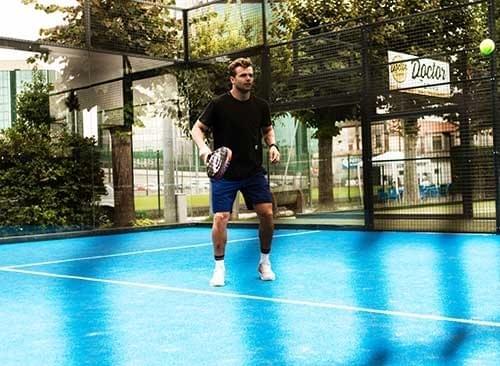

Build Your Own Padel Court A Comprehensive Guide
In recent years, padel has risen to become a popular sport, captivating players worldwide with its blend of tennis and squash. As the demand for padel courts grows, many enthusiasts are considering the prospect of building their own padel court. This venture not only encourages physical activity but also fosters community spirit. Here’s a detailed guide to help you navigate the process of constructing your own padel court.
Understanding Padel
Before embarking on your project, it’s crucial to understand the game itself. Padel is typically played in doubles on an enclosed court that measures 20 meters long and 10 meters wide. The walls are integral to gameplay, allowing players to hit the ball off them as in squash. Having a grasp of the game will aid significantly in designing a functional and enjoyable court.
Site Selection
Selecting the right location for your padel court is the first step. Considerations should include accessibility, sunlight exposure, drainage, and proximity to other recreational facilities. The chosen area should preferably be flat, with enough space not only for the court but also for spectators, seating, and possibly other amenities like changing rooms or restrooms.
Planning and Design
Once you have secured a location, it’s time to plan and design your court. You can choose to work with professional architects or contractors specializing in sports facilities. Alternatively, if you're skilled in design, drafting your own plans can be rewarding. Key design elements include
1. Dimensions Ensure your court adheres to standard dimensions (20m x 10m). 2. Lighting Good lighting is essential for evening play. Installing high-quality floodlights will enhance visibility. 3. Surface The playing surface can vary from artificial grass to concrete; each has its advantages. Artificial turf is softer on the body and provides better traction, while concrete can be more durable. 4. Fencing and Walls Using tempered glass for walls not only looks modern but also allows spectators to see the action while keeping the ball in play. Additionally, ensure there’s appropriate fencing around the court to prevent balls from straying too far.
Budgeting
Budgeting is a critical factor in planning your padel court. Costs can vary significantly based on location, materials, and additional features. Here's a breakdown of potential expenses

- Land Preparation Costs related to clearing and leveling the site. - Materials Expenses for the court surface, walls, and fencing. - Lighting Installation of suitable lighting fixtures. - Labor Hiring professionals versus DIY efforts. - Permits and Insurance Consult local authorities for regulations or required permits.
Setting a realistic budget and allowing for unexpected costs is important
. It’s wise to seek multiple quotes from different contractors to find the best deal.Construction Process
With plans and budget in place, construction can begin. It typically involves
1. Site Preparation Clearing, leveling, and excavating. 2. Base Layer Installation Adding a solid foundation for the playing surface. 3. Surface Layer Installing your chosen court surface. 4. Wall and Fence Installation Erecting walls, backboards, and any additional fencing. 5. Lighting and Amenities Completing the court with lighting fixtures and any amenities you’ve planned.
Throughout this phase, regular inspections and communication with the construction team will ensure the project stays on track.
Maintenance and Community Engagement
Once completed, maintaining your padel court is vital for longevity and player satisfaction. Regular upkeep includes cleaning the playing surface, checking for wear on the walls, and inspecting and maintaining lighting.
To foster community engagement, consider organizing tournaments or regular club nights. Community involvement can enhance the court's reputation and attract new players, making your court a hub for recreation and social interaction.
Conclusion
Building your own padel court is a significant yet rewarding investment. With careful planning, budgeting, and community involvement, you can create a space that brings joy and exercise to players of all ages. As padel continues to grow in popularity, having your own court can be a source of pride and a focal point for the local community. So, roll up your sleeves, gather your resources, and get ready to serve up some fun!
High-Performance Industrial Flooring Solutions China Paddle Tennis Court for Sale
High-Performance Industrial Flooring Solutions Durable & Cost-Effective
Homogeneous Transparent Floor – Durable & Stylish Rubber Floor Solutions
Premium Homogeneous Transparent Floor for Durable & Stylish Spaces Rubber Floor Solutions
Premium Sports Floor Solutions Durable PVC Sports Floor & Rubber Floor for Gyms
Durable Rubber Composite Floor Premium Rubber Floor & Mats Solutions